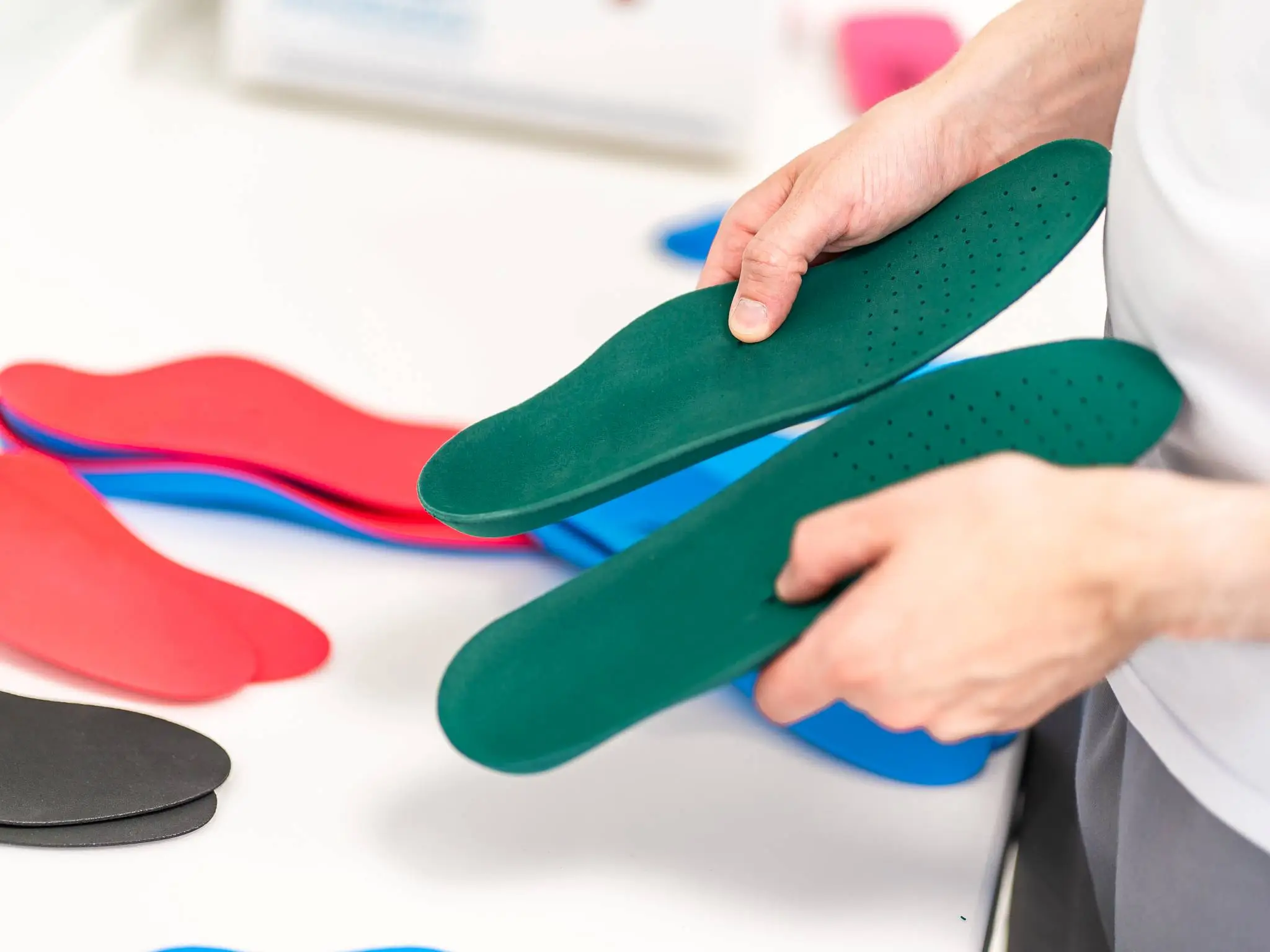The purpose of insoles is to cushion your feet and provide support where needed. Orthotics do just the same but are customized to your specific needs and are made to correct your foot imbalance. They are placed inside your footwear to reduce stress and strain on your body by bringing your feet back into alignment without surgery, similar to how glasses work to reduce the strain on your eyes.
Benefits of Orthotics
Even the slightest inconsistency in your feet can cause a great impact on the rest of your body. Improper posture can lead to issues with the knees, back, and other body parts. Custom orthotics can be used to correct the way we stand and walk, and it’s imperative that they’re custom made as they help by redistributing the pressure evenly around your feet. Orthotics will not permanently change your anatomy, but they will provide more comfort in your everyday activities.
Types of Orthotics
When purchasing orthotic insoles, it’s important to know that there are two different types. Custom made orthotics are more expensive as they are specifically made for your own issues. Standard orthotics are less expensive, however, orthotics from a pharmacy or department store may not target your specific needs properly. Shoe companies often use standard thin liners in their shoes as they don’t want to minimize the market by making shoes only a specific group of people can wear. The standard liners often do not provide support for your feet, but it might be a good idea to try non-prescription orthotics before investing in expensive custom made ones.
Custom Orthotics
For custom orthotics, there are different types and materials that are used. Soft orthotics are constructed with soft materials that are meant to be shock absorbent, relieving pressure and increasing balance. They are good choices for those who have arthritis, diabetes, or deformed feet, as the soft material can easily adapt to varying weights.
Semi-rigid orthotics are made from flexible pieces and high-density rubber. These orthotics are good for those with flat feet, high arches, weak ankles, shin splints, and heel, hip, back, or knee pains. The materials are specifically useful when trying to control excessive motion.
Rigid orthotics are made with a firm material that is also used to control excessive motion, but for heavier people, or for specific footwear like dress shoes, heels, cleats and dance shoes.
When buying custom-made orthotics, it’s important to address all issues that you may have and to match the shape of the insole to your feet. They must be made with a 3D cast or impression of your foot. Some companies only require you to stand on a flat surface to get an impression of your feet. However, this method does not get an impression of your whole foot and is not a proper custom made orthotic.
There are two methods to obtain the 3D image. Plaster slipper casting is simple and captures all the contours of your foot. A plaster is applied directly to your foot while you lay on your stomach for 5-7 minutes and you’re done! Another method to obtain a 3D image of your feet is using a foam box. It involves pushing your foot into foam box and doesn’t require you to lay on your stomach. This method can be used for those who do not need a shape design as detailed as the plaster slipper.
Once the impression of the foot is taken, it is then scanned by a 3D laser scanner which converts it into a digital file. Your podiatrist will have the extensive equipment to produce a positive mold, and depending on what kind of material or orthotics you require, the materials are heated and formed over the mold. Once the shell of the orthotic is made, the specific adjustments will be made based on your podiatrist’s assessment.
Price of Orthotics
The price of orthotics can vary, depending on whether they are non-prescription orthotics or custom made. In 2013, it was reported that more than 1 million orthotics options ranged from $10 to $800. Off-the-shelf devices range from basic inlays purchased at the drugstore for $10 to $20 to more advanced orthoses sold for $150 to $200. Semi-custom orthoses (off-the-shelf versions that can be modified) ranged from $60 to $300. Custom orthotics can cost anywhere from $300 to $800.
When first wearing orthotics, it’s normal that they will feel strange. Proper orthotics should not cause any new pains, redness, or blistering. If this occurs, then you may have to get them adjusted again. Orthotics will not relieve symptoms overnight, but with consistent wear, your feet should begin to heal and realign in no time. Depending on your lifestyle, a little customization and adjustment can provide greater comfort and prevent future injuries and pain.
For more information about how to find the right orthotics for you, call Focus Physiotherapy or contact us here.


